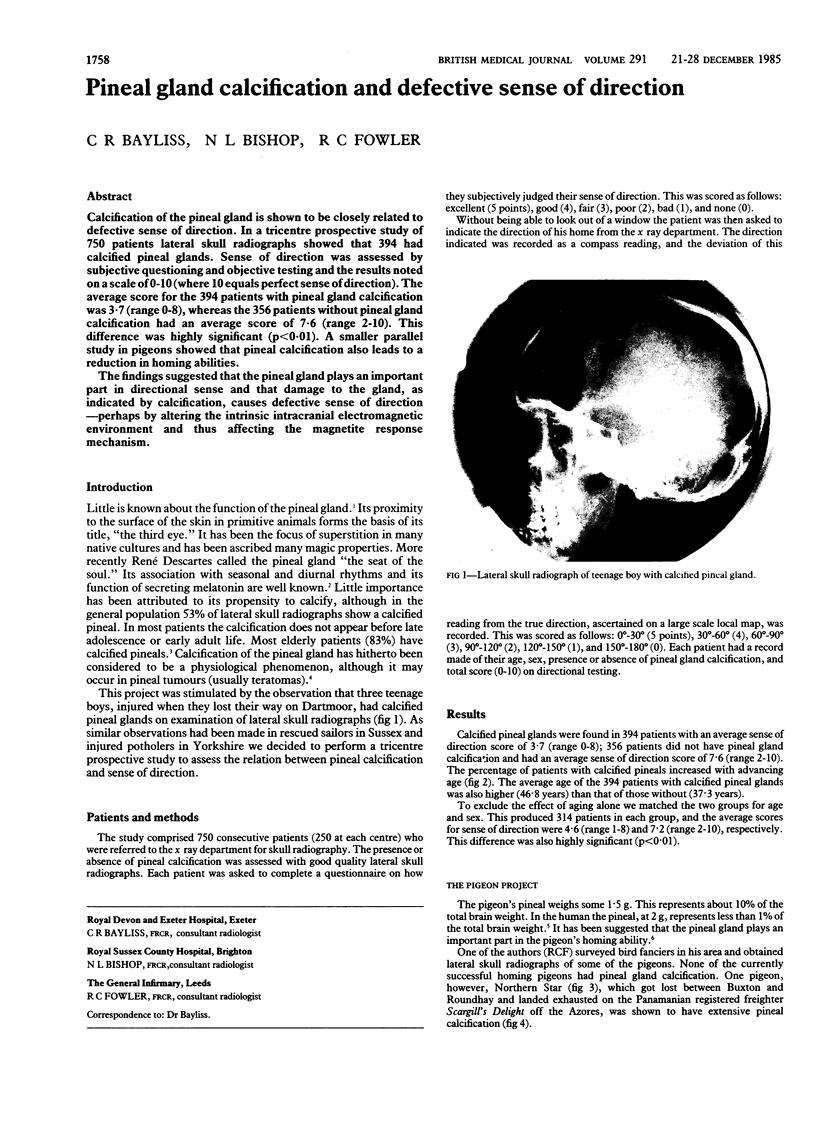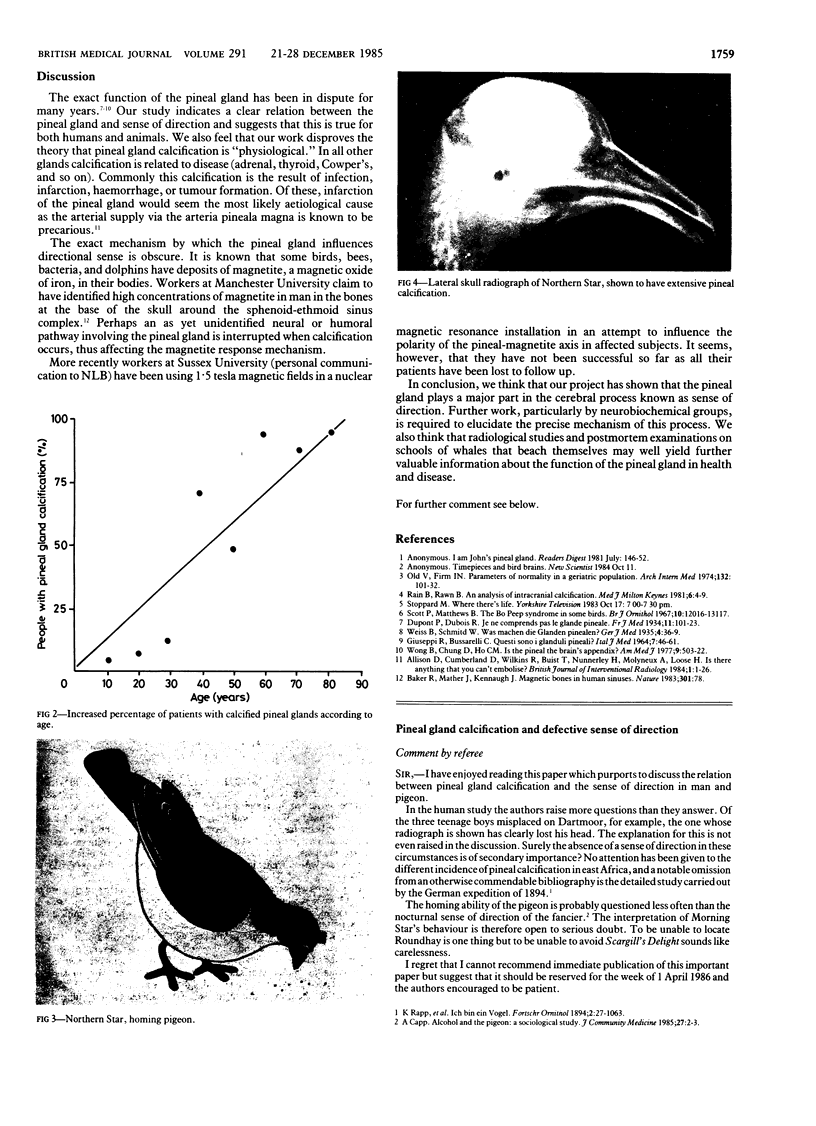Abstract
Calcification of the pineal gland is shown to be closely related to defective sense of direction. In a tricentre prospective study of 750 patients lateral skull radiographs showed that 394 had calcified pineal glands. Sense of direction was assessed by subjective questioning and objective testing and the results noted on a scale of 0-10 (where 10 equals perfect sense of direction). The average score for the 394 patients with pineal gland calcification was 3.7 (range 0-8), whereas the 356 patients without pineal gland calcification had an average score of 7.6 (range 2-10). This difference was highly significant (p less than 0.01). A smaller parallel study in pigeons showed that pineal calcification also leads to a reduction in homing abilities. The findings suggested that the pineal gland plays an important part in directional sense and that damage to the gland, as indicated by calcification, causes defective sense of direction - perhaps by altering the intrinsic intracranial electromagnetic environment and thus affecting the magnetite response mechanism.
Full text
PDF






